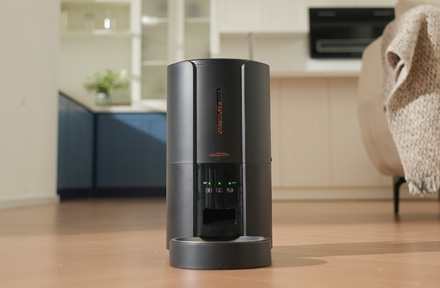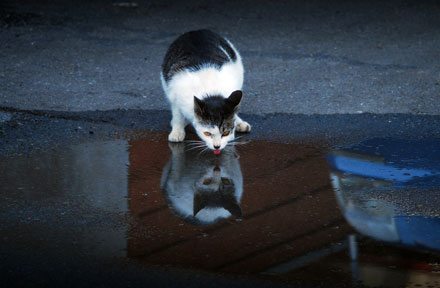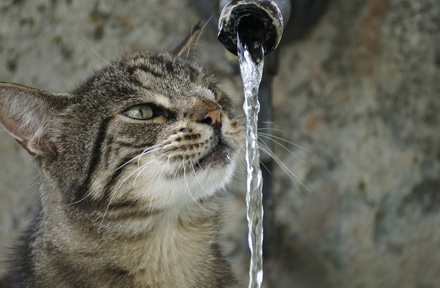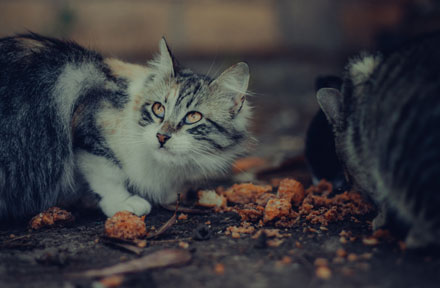Jun 27, 2025
Author:Lisa Martinez

Some moles aren’t harmless. That dark spot on your cat’s skin? It could be more than pigmentation. Skin cancer in cats often hides in plain sight—flat, silent, and easily brushed off as ‘just a freckle.’ But mole melanoma doesn’t wait. It grows. It spreads. And by the time it becomes obvious, the damage is already moving fast.
The problem? Most pet owners don't know what to look for. They assume that if the cat’s eating and playing, things are fine. But feline melanoma can develop without a single change in behavior—until it’s too late.
You're here because you're not leaving it to chance. This guide breaks it down. Exactly what mole melanoma looks like. Where does it hides? And how to act before it spreads.
Here’s what we’ll cover:
● What mole melanoma actually looks like on a cat's skin
● Key differences between benign moles and malignant growths
● Where melanoma tends to appear—and why those spots matter
● Common early warning signs you should never ignore
● How WOpet helps you monitor subtle changes remotely
Let’s cut the guesswork—and catch it early.
Mole melanoma doesn’t look dramatic. That’s what makes it risky. It blends in quietly, slowly, and without pain.
You're not looking for something large or inflamed. Most melanomas start small. Think pinpoint. Maybe slightly raised. Or not raised at all. The edges might feel irregular to the touch, but they’re not always obvious at first glance. Color? Not uniform. That’s a red flag.
Instead of a smooth brown or black, you might notice:
● Uneven coloring — black, brown, gray, and even shades of red mixed in
● Blurred edges — not a clean circle, but jagged or spreading out
● Flat or barely raised texture — it won’t always form a lump
● Slight crusting — especially if it’s older or rubbed often
● Unusual locations — inside the ear, under the tail, between the toes
See a mole that looks darker? Weird shape, shifting size, or feeling off? Don’t wait it out—seriously, that's a vet call.
Some skin spots? Fine. Others? Not so much. The trick is knowing which is which before it turns into something that bites you back later.
Cats get benign moles. Happens. They're usually tiny, stay put, and don’t put on a show. You see it once, you see it the same six months later. That’s not what melanoma does. It stirs things up. Grows. Shifts. Gets sneaky in ways that don’t feel fair. Alright—let’s walk through the visual cues without making it complicated.
● Benign: Think smooth circles or ovals, clean edges like someone traced it with a pen.
● Malignant: Ragged. Uneven. One side creeps out more than the other. Like it’s trying to stretch its legs.
● Benign: Solid color—brown, maybe black. Blends in with the fur or skin tone.
● Malignant: All over the place. Black in one corner, gray or red somewhere else. Like someone dropped paint. Touch it—one section might feel firmer than the rest.
● Benign: Doesn’t change much. It’s boring, which is good.
● Malignant: You blink and it’s bigger. Might even sprout little satellites nearby.
● Benign: Smooth. Maybe slightly raised. Not angry.
● Malignant: Flaky, cracked, or oozing. It could look like a scab that never heals.
● Benign: You can rub it, scratch around it—nothing happens.
● Malignant: Gets raw fast. Might bleed, flake off, or make your cat twitch.
Not sure? Don’t guess. Snap a pic. Set a reminder. Look again next week. Patterns tell the truth when memory blurs.

Melanoma in cats doesn’t spread randomly. It shows up in patterns, and the location offers critical clues about severity, speed, and the likelihood of metastasis.
The most common areas for skin melanoma in cats include:
● Eyelids and the skin around the eyes
● Mouth, gums, and lips
● Ears (inner and outer surfaces)
● Nose and bridge of the snout
● Pads of the feet and between the toes
● Nail beds and claws
● Genital area and perineum
These regions have two things in common: high exposure and thin or vascular tissue. That’s why these spots matter.
● Mucosal areas—like the mouth and eyelids are rich in blood vessels and lymphatic channels. This creates a faster path for malignant cells to travel internally. Melanomas in the mouth, for example, are harder to detect early and more likely to spread into the jaw or lungs.
● Paws and nail beds are under constant pressure. A malignant growth here is often mistaken for an injury or infection. By the time it’s correctly identified, deeper structures may already be involved.
● Ears and noses are exposed to sunlight and often ignored during casual checks. Lesions here may not look threatening until they grow or ulcerate.
Every location tells a story. Some offer early intervention. Others push urgency. Tracking where melanoma appears is step one in controlling what happens next.

Melanoma starts quietly. But it always speaks—if you’re trained to watch. These signs don’t need a microscope or a medical degree. They’re visible. They’re physical. And they’re often right in front of you.
● A new spot out of nowhere: Cats aren’t in the habit of sprouting new moles overnight. If something dark pops up where skin used to be clean—especially in a spot with barely any fur—don’t ignore it. Run a finger across it. Texture says a lot. Then, wait a few days... check again. Better yet, take a photo now. Even a tiny shift matters.
● An old mole doing something new: Moles don’t usually change, so if one starts to morph? That’s a flag. Growing, darkening, getting bumpy? Nah, not normal. Feel the edges. Is it spreading? Weird texture? Jot the size down. You’ll want that baseline.
● Strange shape, fuzzy edges: Most harmless moles are roundish. Symmetrical. Clean lines. But if it looks like the borders are smudging into the skin around it? Or if it’s bulging out more on one side than the other? Doesn’t feel right. Probably isn’t.
● Too many colors in one spot: One color? Fine. A whole palette—black, reddish, grey, or patchy tones? That’s unstable. Melanoma doesn’t play by the one-shade rule.
● Bleeding, scabbing, leaking: Any mole that starts to ooze, crust over, or flake is stressed. Your cat might scratch at it, which makes it worse. If fur near it feels tacky or matted, that could be dried fluid. That’s not something to sit on.
● A lump you can’t see: Melanoma doesn’t always show itself on the surface. Press gently around a mole. If there’s a solid bump underneath, something’s growing deeper. Flat on top doesn’t mean harmless.
● It keeps getting irritated: You’re not seeing scratches or trauma, but the spot looks inflamed again and again? That pattern matters. Recurring flare-ups—even without obvious cause—can signal a deeper issue hiding under chronic irritation. Track it. You’ll spot the pattern before it gets missed.
Each of these signs gives you a lead. Follow it. Don’t wait for pain or fatigue. By then, you’re dealing with a different stage entirely. Early means visible. Visible means manageable.
When mole changes start under your radar, WOpet can quietly step in to help you keep an eye, without being there.
WOpet’s Heritage View Automatic Pet Feeder with Camera integrates more than just feeding. It's built-in 70° adjustable HD camera lets you:
● Check skin spots during mealtimes – Zoom in to inspect texture, color shifts, or crusting without disturbing your cat.
● Capture time-stamped footage – Daily or weekly overviews help you detect even minor mole growth or color change.
● Talk to your cat – Use two-way audio to soothe pets if they seem agitated around a lesion, encouraging calm behavior during checks.
● Track patterns over time – Automatic app notifications remind you to review camera logs, so you don’t miss a subtle shift.
All that live video syncs to the WOpet Life app, giving you remote visibility—and a chance to act faster. Unlike traditional monitoring, this approach turns casual camera checks into a health-monitoring routine. You’ll catch changes early, long before a vet visit. With consistent oversight, mole melanoma doesn’t stand a chance of staying hidden.
Finding that odd mole isn’t luck. It’s awareness. You’ve now got the tools to notice what matters—before things spiral. Whether it’s a dark patch near the eye or a crusting spot between the toes, small shifts lead to big answers when caught early.
You’ve learned where melanoma shows up. How it grows. What makes it dangerous? And what sets it apart from harmless skin spots? You know the signs, the textures, and the red flags.
● You know what to scan for—on the skin, under the fur, and between the toes.
● You can tell if a mole is changing shape, bleeding, or spreading.
● You know why certain body zones—like the mouth and paws—demand closer tracking.
● You understand how consistent monitoring helps catch the quiet signs.
That’s where smart tools like WOpet come in. They don’t replace the vet, but they keep you in control when you're away. You get clearer visibility. Better routines. Sharper instincts.
Small actions now mean fewer regrets later. Skin cancer hides in the quiet. But now, you know how to spot the noise.
Label:
Popular Post

What to Feed a Sick Dog With No Appetite? [2025 Guide]
May 16, 2023

Troubleshooting Common Issues with Automatic Pet Feeders: Tips & Tricks for Pet Owners
Oct 26, 2023

Why Does My Cat Cough After Drinking Water? 8 Potential Reasons
Mar 13, 2023

Why is My Cat Throwing up Water? Top 5 Causes Here
Feb 08, 2023

My Cat Only Eats A Little at A Time - What to Do?
Feb 27, 2023
$99.99
$129.99
Copyright © 2025 WOPET. All Rights Reserved.